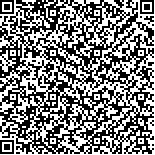| 本文已被:浏览次 下载次 |

码上扫一扫! |
|
|
|
| A new method for identifying low-contrast reservoir based on optimizing design of drilling fluid properties |
|
CHENG Xiang-zhi1,FAN Yi-ren1,ZHOU Can-can2,ZHOU Feng-ming3
|
|
(1. Faculty of Geo-Resource and Information in China University of Petroleum,Dongying 2570619 Shandong Province, China;2. Well Logging and Remote Sensing Technology Department,Research Institute of Petroleum Exploration and Development,PetroChina,Beijing 100083,China ;3. Research Institute of Exploration and Development, Jidong Oilfield y Tangshan 063004, Hebei Province, China )
|
| Abstract: |
| Aimed at the problem that the low-contrast pay is more difficult to recognize by the conventional resistivity method, the influence factors of the spontaneous potential (SP) anomaly magnitude under the fresh & the brine drilling fluid and the relationship between saturation and the SP anomaly magnitude were analyzed by the mechanism of SP. The results show that the oil layer has low amplitude normal or negative anomaly SP and the water layer has large amplitude positive anomaly SP under the brine drilling fluid. The fluid performance was reasonably designed to adjust logging environment of well drilling, and the positive anomaly SP was obtained by prompt logging, then the low-contrast pay was accurately and effectively recognized by using the difference of the SP anomaly magnitude between oil layer and water layer. The technique was extensively applied in recognizing the low-contrast reservoir Jidong Oilfield,which shows that the technique is an effective way of recognizing the low-contrast reservoir. |
| Key words: optimization design drilling fluid resistivity spontaneous potential low contrast reservoir evaluation |
|
|